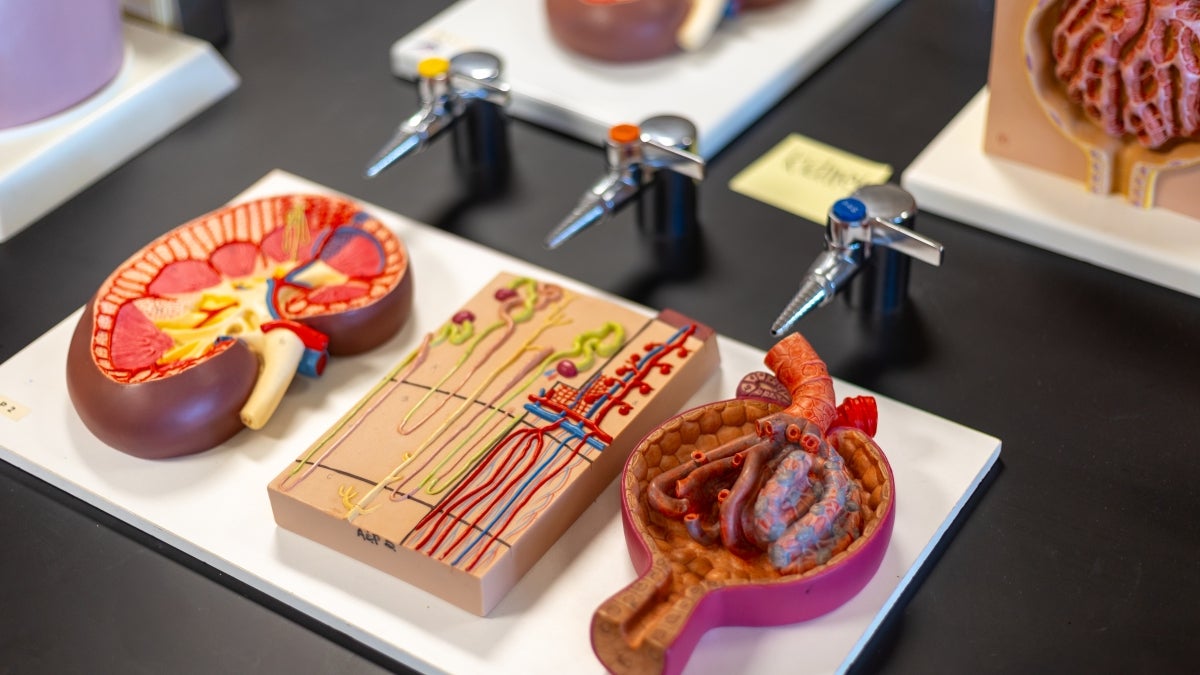
Chronic kidney disease affects one in seven adults in the United States. For two in 1,000 Americans, this disease will advance to kidney failure.
End-stage renal failure has two primary treatments — dialysis and transplantation. Studies show that, overwhelmingly, kidney transplants offer increased quality of life and lower mortality rates than dialysis. Transplant recipients have a five-year survival rate of over 80%, compared with the 35% five-year survival rate of dialysis.
A staggering 86% of people awaiting an organ transplant are seeking kidney transplants. More kidney transplants are performed each year, rising to 27,759 in 2024. In spite of this demand, there remains a shortage of kidneys available for transplant.
Nearly 90,000 patients with end-stage renal failure currently remain on the waitlist to receive a kidney transplant, with 13 dying each day and more taken off the list due to the severity of their illness preventing them from receiving a transplant.
While many kidneys retrieved are deemed viable, 28% are declined for transplantation, higher than many other countries, despite the ongoing organ shortage.
With a nearly $1.5 million R01 grant, Ellen Green, associate professor in Arizona State University’s College of Health Solutions, aim to better understand the decision-making process that moves organs through to be transplanted.
Green, the principal investigator on the project, and partners Glenn Dutcher from the University of North Carolina at Charlotte, Darren Stewart from New York University and Jesse Schold from University of Colorado Anschutz Medical Campus, are working to investigate the factors influencing clinicians’ decisions to accept or decline viable kidneys.
Dutcher, applied microeconomist and associate professor with the Belk College of Business at UNC Charlotte, has been part of the team since the start of the study in 2021, when they received seed funding via a Jumpstart Grant from ASU’s College of Health Solutions. Dutcher takes particular interest in the prospect of improving life quality and longevity.
Their study is the first to investigate the differences between individual decision-making processes from clinician to clinician, presenting an important opportunity to address a national challenge.
“Ultimately, we want to understand if there are different decision processes at the human level. Are there differences in how doctors think about their patients and how they think about accepting these deceased donor kidneys on behalf of their patients?” Dutcher said.
Dutcher’s expertise in risk preferences and decision-making processes offers key insights into why clinicians accept or reject certain donor kidneys.
“From an economist’s perspective, it’s a fascinating challenge to study how organs — an extremely limited resource — are allocated in a system that isn’t driven by price,” Green said,.
Green’s team utilizes unique decision-making data from two contexts — within a lab and in the field — to link survey data to retrospective clinician decision-making.
“By doing so, we can better understand how factors like experience, risk aversion and decision-making heuristics contribute to variability and, ultimately, design policies that account for the nuances of individual decision-makers,” Green said.

Her team first received a $450,000 R21 grant in 2021, yielding data that has been published by the American Journal of Transplantation. This initial study offers a better understanding of what affects the ability to accept a kidney at the clinician level.
The researchers found that despite uniformity between demographics and center resources, clinician acceptance rates can vary significantly — and even at the center level, decision-making can present uniformly or with considerable variation. According to Green, the study suggests that factors involved in this decision-making relate to “individual risk tolerance, experience with complex surgeries and training.”
“Recognizing these differences opens the door to more nuanced strategies: learning from clinicians who effectively manage complex cases while also acknowledging that more is not always better. Another critical takeaway from our study is that variability within a single transplant center cannot be overlooked when designing policies or — as is widely debated — using AI-based allocation systems,” Green said.
“Relying solely on center-level averages assumes that every clinician’s decision-making is the same, which can mask important differences in individual risk tolerance and experience.”
From clinician to clinician, the willingness to accept a donor kidney may come down to experience. A more experienced clinician may be more willing to accept a donor kidney based on their time working with more complex cases, as opposed to a more inexperienced clinician, who may opt to take a more conservative approach.
“To truly optimize organ allocation, we need to incorporate individual decision-making patterns into our models. Otherwise, we risk missing opportunities to place kidneys with clinicians who are both willing and able to accept them, ultimately reducing the potential for more successful transplants,” Green said.
Now, in the first year of their four-year R01 grant, they can look into how the differences between clinician decision-making strategies affect the patient population and pave the way to advising on policy that leverages this decision-making.
“Our $1.5 million (grant from the National Institute of Diabetes and Digestive and Kidney Diseases) builds on this by further exploring these variations with the goal of improving policies and access to transplantation,” Green said.
Green’s research illuminates a critical area for policy shifts, which could have “wide-reaching effects on how often kidneys are offered, who is offered them and what ultimately happens to those organs,” according to Green.
She plans to conduct further research to concretely establish the policy changes necessary to minimize nonuse rates across centers.
Using interventions such as evidence-based clinical decision-support tools in the allocation process or establishing assessments to understand the relationship between acceptance patterns and patient outcomes, the team can work to create better procedures that target the reasons for hesitation when deciding whether to accept or reject a kidney.
“Transplant centers can use our findings to consider root causes for the variations we found, and to decide if there are ways to reduce those variations,” Green said. “This is particularly important when evidence suggests that conservative acceptance practices can jeopardize transplant success and patient health.”
About this story
There’s a reason research matters. It creates technologies, medicines and other solutions to the biggest challenges we face. It touches your life in numerous ways every day, from the roads you drive on to the phone in your pocket.
The ASU research in this article was possible only because of the longstanding agreement between the U.S. government and America’s research universities. That compact provides that universities would not only undertake the research but would also build the necessary infrastructure in exchange for grants from the government.
That agreement and all the economic and societal benefits that come from such research have recently been put at risk.
Learn about more solutions to come out of ASU research at news.asu.edu/research-matters.
By Eden Miller | April 02, 2025 | Original Post

